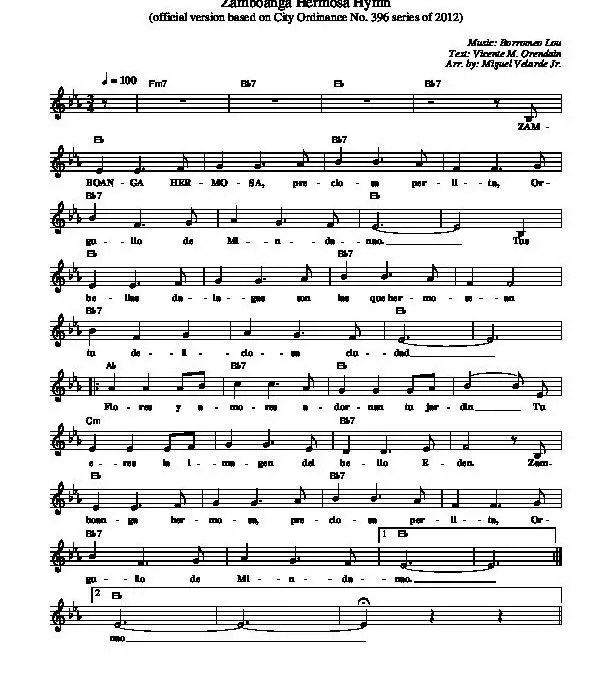Ah, the mystical world of guitar chords and key signatures – a place where a simple strum of the strings can transport you to a whole new dimension of musicality. But fear not, dear reader, for I am here to guide you through the often-confusing maze of frets and notes. So grab your guitar, put on your thinking cap, and get ready to unlock the secrets of decoding guitar chords and key signatures with a sprinkle of humor along the way. Let’s rock and roll, baby!
Contents
- 1 Understanding the Fundamentals of Guitar Chords
- 2 Distinguishing Between Major and Minor Chords
- 3 Exploring the Circle of Fifths and Its Impact on Key Signatures
- 4 Mastering Chord Progressions in Various Musical Keys
- 5 Applying Key Signatures to Enhance Guitar Playing
- 6 Navigating Complex Chords and Their Role in Music Composition
- 7 Leveraging Guitar Chords to Modulate Between Keys
- 8 FAQs
- 9 Rock on, Guitar Heroes!
Understanding the Fundamentals of Guitar Chords
Alright, let’s dive into the wild world of guitar chords! Don’t worry, it’s not as scary as it sounds. Think of chords as the building blocks of music, they’re the ingredients that make up a tasty musical dish. And who doesn’t love a good meal, right?
So, here’s the deal – a chord is basically a combination of three or more notes played together. It’s like a little musical harmony party happening on your guitar. And just like any party, some chords get along better than others. But hey, that’s what makes music interesting!
Now, there are different types of chords out there, but the most common ones you’ll come across are major and minor chords. Major chords sound happy and upbeat, like a sunny day at the beach. Minor chords, on the other hand, are a bit more emo – they’ve got that brooding, mysterious vibe going on.
When it comes to playing chords on the guitar, you’ve got to get those fingers moving. Each chord has a specific shape that you need to master, and trust me, it can feel like trying to solve a Rubik’s cube at times. But hey, practice makes perfect, right? So keep at it, and soon enough, you’ll be strumming away like a rockstar!

Distinguishing Between Major and Minor Chords
So, you think you can tell the difference between major and minor chords, huh? Well, let me tell you, it’s not as easy as it sounds. But fear not, dear reader, for I am here to guide you through the mysterious world of musical chords!
First things first, let’s talk about major chords. Major chords have a happy, upbeat sound that will have you tapping your foot and singing along in no time. They are like the cheerleaders of the chord world, always bright and full of energy. Major chords are typically denoted by a simple “M” or sometimes nothing at all, because hey, they’re major – they don’t need to prove anything to anyone!
On the other hand, we have minor chords. Minor chords are the brooding, mysterious bad boys of the chord world. They have a sad, melancholic sound that will have you reaching for a tissue and staring out the window wistfully. Minor chords are usually denoted by a lower case “m”, because they’re just too cool to bother with capital letters.
So, next time you hear a chord progression, pay attention to whether it’s major or minor. Major chords are like a ray of sunshine on a gloomy day, while minor chords are like a dark and stormy night. Embrace the differences and let them guide you on a musical journey full of twists and turns!

Exploring the Circle of Fifths and Its Impact on Key Signatures
Have you ever looked at the Circle of Fifths and thought, “Whoa, what’s up with all those sharps and flats?” Well, let me tell you, my friend, the Circle of Fifths is not just a fancy diagram – it’s a powerful tool that can help you understand key signatures and how they relate to each other.
When you start with the key of C major at the top of the circle, you’ll notice that there are no sharps or flats. But as you move clockwise around the circle, each new key adds a sharp to the key signature. Conversely, as you move counterclockwise, each new key adds a flat. It’s like a musical game of “Hot Potato” – pass the sharp or flat, please!
But here’s the fun part – the Circle of Fifths isn’t just a pretty pattern of keys. It actually has a real impact on music theory and composition. Understanding the relationship between keys can help you modulate smoothly between different tonalities, create effective chord progressions, and even improvise with confidence.
So, next time you find yourself lost in a sea of sharps and flats, just remember the trusty Circle of Fifths. It may look intimidating at first, but once you unlock its secrets, you’ll be well on your way to becoming a key signature master!

Mastering Chord Progressions in Various Musical Keys
So you think you’re the master of chord progressions, huh? Well, let me tell you something – have you tried mastering them in various musical keys? It’s a whole different ball game, my friend.
Imagine a world where you can effortlessly switch between keys like a pro, creating harmonious sounds that make even Beethoven jealous. Well, that world is within your reach – all you need is a little practice and a whole lot of determination.
With a bit of determination and a touch of creativity, you can unlock the secrets of chord progressions in every key imaginable. From the soulful sounds of E major to the jazzy vibes of C minor, the possibilities are endless.
So don’t just stick to the same old keys – venture out into the musical unknown and conquer them all. Who knows, you might just become the next chord progression maestro, dazzling audiences with your mastery of keys and chords.

Applying Key Signatures to Enhance Guitar Playing
So you’ve mastered the basic chords and scales on your guitar, but now it’s time to take your playing to the next level by learning how to apply key signatures. Don’t worry, it’s not as scary as it sounds!
One of the easiest ways to enhance your guitar playing is by familiarizing yourself with the different key signatures. This will not only help you understand the relationship between chords, but it will also make it easier for you to improvise and write your own music.
Here are a few tips to help you get started:
- Start by memorizing the key signatures and the corresponding scales.
- Practice playing scales in different keys to get comfortable with the feel of each.
- Experiment with chords in different keys to see how they fit together.
Remember, practice makes perfect! So grab your guitar and start applying those key signatures to take your playing to the next level.
These days, music composition can feel like navigating a minefield filled with complex chords. From diminished sevenths to augmented ninths, it’s enough to make any musician’s head spin faster than a vinyl record on a turntable.
Despite the intimidating nature of these chord progressions, they play a crucial role in creating rich and dynamic songs that keep listeners on their toes. Think of complex chords as the spicy jalapenos in your musical salsa – they add that extra kick that takes your composition from bland to mind-blowing.
When it comes to incorporating complex chords into your music, remember to give each one its moment in the spotlight. Whether it’s a jazzy dominant seventh or a dissonant cluster chord, let them shine like the rockstars they are. Don’t be afraid to experiment and mix and match different chord voicings to see what truly tickles your musical taste buds.
And lastly, don’t forget to have fun with these complex chords – after all, music is all about expression and creativity. So go ahead, throw in that augmented eleventh chord or spicy Lydian dominant scale and watch as your composition takes on a life of its own.
Leveraging Guitar Chords to Modulate Between Keys
So you’ve mastered all your basic guitar chords and you’re feeling like a rockstar, but what if I told you there’s a super sneaky way to take your playing to the next level? That’s right, we’re talking about leveraging those trusty chords to modulate between keys like a musical magician!
With a little bit of know-how and a hefty dose of courage (and maybe some liquid courage – we don’t judge here), you can seamlessly shift from one key to another without missing a beat. It’s like hitting the turbo boost on your guitar playing!
Picture this: you’re jamming out in the key of G major and suddenly you want to switch it up to D major for a bit of a spicy change. No problem! Just throw in a few transitional chords and you’ll be wowing your fellow musicians with your key-changing prowess in no time. It’s like a secret weapon in your musical arsenal, ready to be wielded at a moment’s notice.
Don’t be afraid to experiment and get a little wild with your chord progressions. The world is your oyster, and with a few cleverly placed chord changes, you can take your audience on a musical journey they won’t soon forget. So go forth, brave guitarist, and conquer the world of modulation with your trusty guitar chords at your side!
FAQs
Why do guitar players need to understand chords and key signatures?
Well, unless you want your guitar to sound like a cat walking on a piano, it’s probably a good idea to understand how chords and key signatures work together. Plus, it’ll help you impress your friends at jam sessions.
How do you decode guitar chords?
It’s like solving a musical puzzle. Each chord is made up of a combination of notes that create a unique sound. Once you crack the code, you’ll be playing your favorite songs like a pro.
What are key signatures and why are they important?
Think of key signatures as the secret sauce that gives a song its flavor. They tell you which notes to play and when, so you can jam out without hitting any sour notes.
How can guitar players use chords and key signatures to jam with other musicians?
By understanding chords and key signatures, you’ll be able to easily follow along with other musicians and even take the lead. It’s like learning a secret language that only cool people like you can speak.
Any tips for beginners trying to decode guitar chords and key signatures?
Practice, practice, practice. And don’t be afraid to make mistakes – that’s how you learn. Oh, and don’t forget to have fun along the way. After all, music is supposed to be enjoyable, not a stressful math equation.
Rock on, Guitar Heroes!
Well, that’s all the secrets to decoding guitar chords and key signatures revealed. Now that you’ve mastered the art of deciphering the musical mysteries of the fretboard, you’re one step closer to becoming a true axe-wielding virtuoso. So grab your six-string and unleash your inner rock star – the stage is yours to conquer!
Remember, practice makes perfect, so keep strumming those chords and rocking out to your heart’s content. And who knows, maybe one day you’ll be headlining sold-out stadiums and shredding epic guitar solos like a true legend. Until then, keep jamming and let the music take you to new heights!
Rock on, guitar heroes, rock on!



